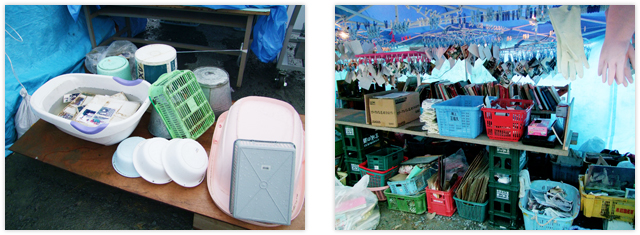On March 31, our Customer Communication Center received a phone call from Shinji Takai, a man from Kesennuma who had read a newspaper article about cleaning damaged photographs. He said, "We are gathering tons of found photographs and albums. We need to know more about the cleaning process." Shortly afterwards, one of our employees returned his call to explain the process in detail, and we heard that he had successfully cleaned the prints and they were in good condition. He humbly requested additional drying pegs and small photo albums, which we arranged to be sent immediately. As a result of the disruptions to the delivery service due to the earthquake, the package eventually arrived on April 10.

At that time, we started to be contacted by television networks asking if they could do a feature on how to clean photographs that had been damaged by muddy water. As the inquiries increased in number, we became anxious that we hadn't managed to find the time to visit the affected areas to see the reality of the situation for ourselves. This feeling was enhanced by the fact that we were working on various experiments in our factory to simulate the damage caused to photographs. We had also begun to notice that along with the mass media, many of our customers had presumed that photographs couldn't get wet and accordingly the thought of cleaning prints in water hadn't occurred to them. As a film manufacturer, we felt that it was necessary for us to let people know that the prints could be cleaned in water, and if done properly, the images could be saved. We reached the conclusion:

Among our employees, more and more people began to feel the urgent need for this to happen.
On April 5, a reporter brought some damaged photographs to the factory for us to clean as part of a television feature. It was our first time seeing prints from the affected areas, and after 40 minutes working in front of the camera, the mud was removed and the images finally appeared. We were overcome with a sense of relief and everyone around us, including the crew, began to applaud.
In order to reach as many people as possible, we decided to shoot a television ad with the message, "Even if your photographs are damp and covered in mud, don't give up." It was screened from April 23-30 in Miyagi, Iwate, Fukushima and Aomori, with additional ads aired on radio stations in Ibaraki and the aforementioned prefectures. We sincerely hoped that the message reached as many people as possible so that a large number of photographs could be saved.




